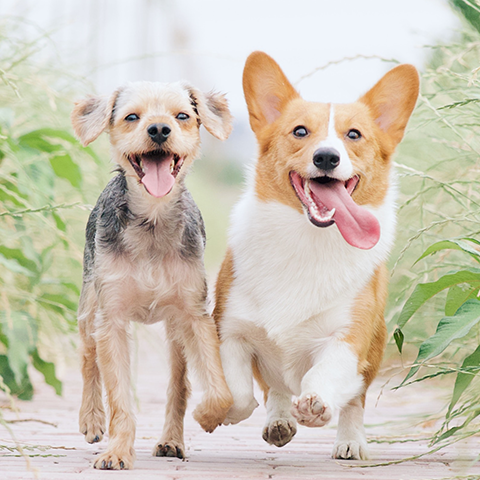There are several reasons why routine exercise is important for maintaining good health in our dogs. Daily exercise along with an appropriate diet helps dogs maintain a good body condition by burning calories and maintaining muscle mass. Also, exercise provides mental stimulation for our dogs which can help to alleviate boredom and bad behaviors. Exercise also helps keep joints lubricated to aid in maintaining good mobility. All these benefits beg the question of how much exercise should I be providing to my dog. This is a complex question and there are multiple aspects to consider.
Lifestyle and Condition
What is the current lifestyle of your dog. Is he generally sedentary or already very active? How about his body condition? Could he stand to lose some weight or already in a great body condition? If your dog is either sedentary or overweight, you will want to slowly increase exercise. It is a good idea to consult your veterinarian prior to embarking on a new lifestyle for your dog.
Breed
Your dogs’ breed influences the amount of exercise he may desire or tolerate. Dogs included the categories of sporting breeds, working breeds, herding breeds, terrier breeds and scent hounds tend to be very active and do well with higher amounts of exercise compared to other breed groups. Recommendations range from 60 to 120 minutes of daily exercise. The other end of the spectrum is Brachycephalic breeds. Examples of Brachycephalic breeds are English Bulldogs, French Bulldogs or Pugs. They tend to have compromised air passages due to pushed faces, so they do not tolerate higher levels of exercise. Recommendations for these breeds range from 20 – 30 minutes per day. Other breeds are known for having medium energy. This includes toy and small breeds, sight hounds and giant breeds. Recommendations for these breeds range from 30 – 45 minutes per day. For mixed breeds it is recommended to assess which breed or breeds have the most genetic influence on your dogs’ body makeup and follow the recommendation for that breed type.
Age
As your dog ages you may notice that he is starting to slow down and not as excited about your daily walk. You will want to consider decreasing the exercise amount each day or spreading your exercise routine into smaller chunks throughout the day. Be sure to consult your veterinarian if you suspect your dog is developing joint challenges for advice on exercise type and duration.
Types of Exercise
There are numerous activities that you and your dog can do to provide exercise. The most obvious is your daily walk together. This will provide benefits to both you and your dog. You can also consider other outdoor activities such as running together, running along your bike, playing fetch, frisbee to name a few. Inclement weather is no excuse for not getting your daily routine in. Your dog may enjoy playing games such as chase or hide and seek or tug of war. Also consider playing fetch up and down the stairs. Lastly, consider providing intellectual stimulation with toys that allow you to place treats inside to provide a mental challenge.
Focus on activities that are fun for you and your dog. Be sure to provide exercise throughout the week to avoid becoming a weekend warrior. Going from a sedentary work week to a highly active weekend has the potential for injuries. Consult your veterinarian to be sure your dog is ready to increase his activity. There are numerous references for ideas for exercise or competitive activities in which both of you can participate. Most importantly, have fun and you and your dog will realize the benefits of activity and strengthening your bond.
Further Reading
Exercising With Your Dog 101 PETMD
What’s a Good Exercise Plan For My Pet? Cummings Veterinary Medical Center, Tufts University, Pet Foodology
How Much Exercise Does a Dog Need Every Day? American Kennel Club, Fitness & Exercise
